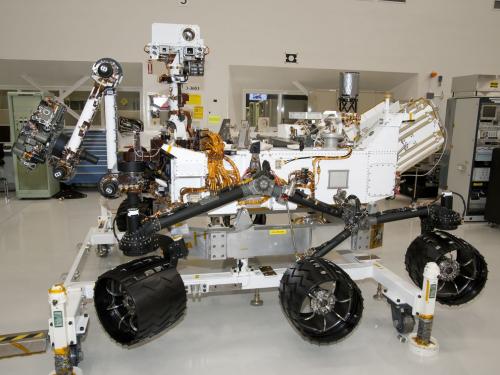

Stories of daring, stories of technological feats, stories of prevailing against the odds ... these are the stories we tell at the National Air and Space Museum. Dive in to the stories below to discover, learn, and be inspired.
Showing 31 - 37 of 37

April 30, 2015
Today, the MESSENGER spacecraft will succumb to the influence of gravity and impact on the surface of Mercury

August 20, 2013
The Viking program represents a major effort by the United States to explore Mars, with the particular goal of performing experiments on Martian soil to look for possible evidence of life. Four individual spacecraft were sent to Mars as part of the Viking project, two orbiters and two landers, launched as identical orbiter/lander pairs.

July 24, 2013
One of the primary objectives in the Museum’s previous collection surveys has been to identify artifacts which are actively deteriorating and require stabilizing treatments prior to being relocated to the new storage facility at the Steven F. Udvar-Hazy Center in Chantilly, Virginia. These artifacts with active corrosion, mold contamination, hazardous materials, and physical insecurities were set aside for a team of three contract conservators to perform specialized treatments.

October 06, 2011
The remarkable twin Voyager spacecraft continue to explore the outer reaches of the solar system decades after they completed their surveys of the Outer Planets.

July 22, 2011
Here is a riddle: What takes more than 60 locations, 5 years, and 150 scientists to decide? The landing site for the Mars Science Laboratory (MSL) rover Curiosity. Picking the landing site for a spacecraft to land on another planet is always serious business. And the job of finding the best location for Curiosity to set down on Mars was no exception. Curiosity’s mission is geared towards understanding whether Mars could have ever been habitable.

July 03, 2011
There is a strange looking car parked in the west end of the National Air and Space Museum in downtown Washington, DC. For now, it is only visible behind its security screen from the second floor landing above. From that vantage, the vehicle’s six wheels, robotic arm, mast, and other protrusions are clearly visible. But since this is the Air and Space Museum, it must be more than just a normal car. Soon the barriers will be gone and the public will be able to view the vehicle up close and personal. And what they will see is a model of the next Mars rover, NASA’s 2011 Mars Science Laboratory. The rover, dubbed “Curiosity” will be launched to Mars later this year and will begin its mission to explore whether places on the Red Planet were ever habitable.

May 29, 2009
Baker, a squirrel monkey, launched into space on a sub-orbital flight, along with a rhesus monkey named Able, on May 28, 1959.